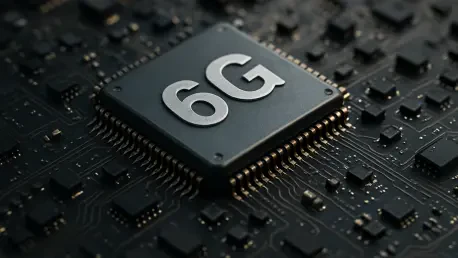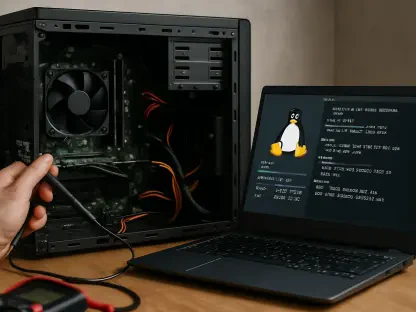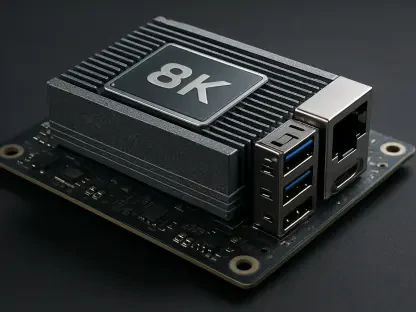In a world increasingly reliant on seamless connectivity, the race to develop next-generation wireless technology has reached a remarkable milestone with the unveiling of what could be a game-changing innovation in 6G networking. Imagine a future where autonomous vehicles communicate instantly, holographic meetings feel as real as face-to-face interactions, and AI systems optimize data flow in real time—all powered by a single, compact piece of hardware. A collaborative team of researchers from Peking University and the City University of Hong Kong has brought this vision closer to reality with a pioneering chipset that promises to redefine wireless communication. Published in a leading peer-reviewed journal, this breakthrough showcases the potential to operate across an unprecedented range of frequencies, setting a new benchmark for speed and efficiency. As the tech community buzzes with anticipation, this development sparks curiosity about how close society is to achieving the long-awaited 6G era and what challenges lie ahead in turning this innovation into everyday reality.
Breaking New Ground in Wireless Technology
Unveiling a Revolutionary Design
The announcement of this cutting-edge chipset marks a significant leap forward in the evolution of wireless networks, particularly with its claim to be the first of its kind capable of handling all frequencies relevant to 6G. Constructed using thin-film lithium niobate (TFLN), this tiny marvel measures just 11 x 1.7 millimeters yet operates across a vast spectrum from 0.5 GHz to 115 GHz. This range encompasses microwave, millimeter wave, and terahertz bands, a feat that eliminates the need for multiple radio systems—historically requiring up to nine separate units. By consolidating such wideband capability into a single unit, the chipset not only simplifies network infrastructure but also slashes costs and boosts performance. The implications are profound, as this could pave the way for more accessible and efficient communication systems globally, especially in regions struggling with outdated or fragmented setups. Researchers have hailed this as a critical step toward meeting the escalating demands of future digital ecosystems, though real-world application remains a distant goal.
Technical Foundations and Capabilities
Delving deeper into the chipset’s architecture reveals a sophisticated photonic wireless approach that transforms electrical signals into optical waves for processing, ensuring broad coverage within a compact footprint. Key features include data speeds surpassing 100 Gbps, ultra-low latency for real-time responses in critical use cases like remote surgery, and seamless AI integration for dynamic network optimization. During testing, the chipset demonstrated impressive agility by locking onto a 6 GHz frequency in under 180 microseconds, thanks to its wideband electro-optic modulator and optoelectronic oscillators that stabilize radio frequencies. Such capabilities position it as a cornerstone for applications requiring adaptability to fluctuating traffic patterns, from smart cities to industrial IoT. However, despite successful internal validation, experts caution that field trials are essential to confirm reliability under diverse, real-world conditions, highlighting that this innovation is still in its experimental phase with much to prove before widespread adoption.
Future Implications and Challenges Ahead
Transforming Connectivity for Tomorrow
Looking ahead, the potential of this all-frequency 6G chipset to revolutionize connectivity cannot be overstated, as it aligns perfectly with the anticipated needs of futuristic technologies like holographic communication and fully autonomous systems. The ability to deliver ultra-high data speeds and minimal latency addresses the core requirements of an increasingly connected world, where billions of devices will demand instantaneous interaction. Beyond technical prowess, the chipset’s compact design offers a practical advantage, enabling integration into diverse hardware without the bulk of traditional systems. This could democratize access to advanced networks, particularly in underserved areas where space and cost constraints often hinder progress. As industries from healthcare to transportation eye the possibilities, this development serves as a beacon of what 6G might achieve over the next decade, assuming global collaboration accelerates its refinement. Yet, the journey from lab to market involves navigating a complex landscape of compatibility and scalability.
Navigating the Road to Implementation
While enthusiasm surrounds this breakthrough, a pragmatic view acknowledges the substantial hurdles that remain before 6G becomes a tangible reality for consumers and businesses alike. A single chipset, no matter how innovative, represents only a fragment of the broader 6G ecosystem, which demands compatible devices, sustainable infrastructure, and unified global standards. Field testing will be crucial to validate performance outside controlled environments, ensuring the technology withstands real-world variables like interference and wear. Moreover, the integration of such advanced hardware into existing networks poses logistical challenges, requiring significant investment and coordination among stakeholders. Reflecting on past transitions, such as the shift from 4G to 5G, it’s evident that patience and perseverance will be necessary to overcome these obstacles. Looking back, the groundwork laid by this chipset stirred optimism, but it was clear that sustained effort over the coming years would determine whether this early promise translated into transformative impact.









